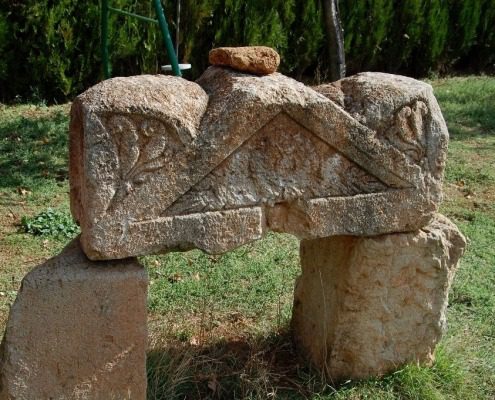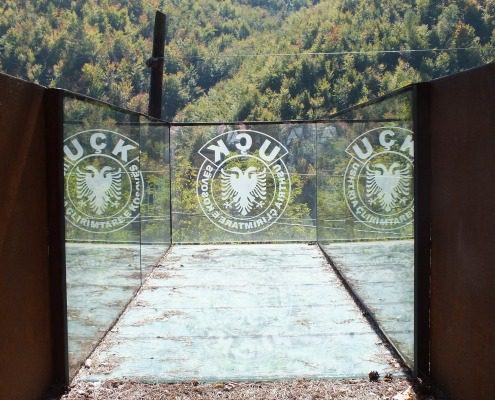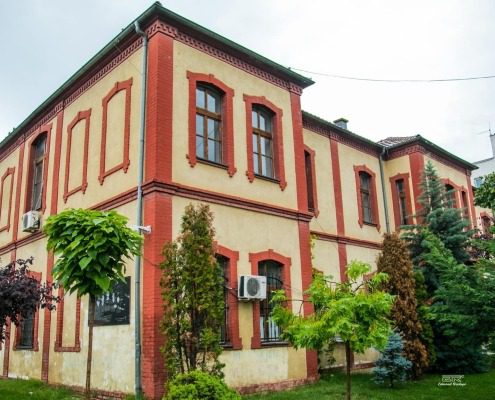
Paleochristian church in Nikadin
During the 60s of the 20th century, in the village of Nikadin, surface traces of perhaps a complex of Roman villas were found, where a very rare and unique artefact for the territory of Kosovo was discovered. We are talking about a sarcophagus lid (sarcophagus – coffin or box for placing the corpse), made entirely of marbleized limestone in the shape of the roof of the house, and dominated by decorations with anthropomorphic motifs (human figures) on the axes and floral motifs on the front. This sarcophagus lid belongs to the late Roman period of the 3rd century AD and the beginning of the 4th century AD. Several archaeological researches were conducted (2007) in the place where the lid of the sarcophagus was found, which resulted in traces of a church of not-so-large dimensions, although quite damaged, from the early Christian period (IV-VII centuries AD), and completed with some stelae (recycled material) of decorative sepulchral plastic from the Roman period (III-IV centuries AD).
Mosaic in Nerodime e Poshtme
In 1988, several archaeological surveys were carried out in the village of Neredime e Poshtme, located to the west of the city of Ferizaj, in the area very close to the Orthodox graves, and they resulted in the discovery of a complex of a late antique villa, with an atrium and a mosaic polychrome, geometric and figural floor. The first phase belongs to the 4th century, whereas the reconstruction and superstructure belong to the V-VI century. The mosaic was discovered on the floor of a rectangular room with an apse which may have served as a triclinium. This mosaic was looted by the Serbian invaders and is located in Serbia.
“Mountain of the Church” in Komogllavë
This is an Illyrian-Dardanian church erected at an altitude of 600 meters above sea level, which is thought to have been a place where church religious services were offered for several villages. The discovery of this church and other fragments thereby, document the existence of life in this place. Vases, ceramic vessels, coins, ornaments, iron objects and other carbonized materials, as well as characteristic stones, were found in this locality.
This church is believed to date back to the 4th – 5th century AD, but it was rebuilt in the Middle Ages during the Byzantine Empire. It is an ancient urbanized locality with different roads, sewerage and infrastructure. The pottery found here bears little resemblance to those found in other settlements. These pottery vessels and the church cross are preserved in the city museum in Ferizaj.
The Fountain of the Illyrian-Roman period
The Fountain of the Illyrian-Roman period is located in the village of Komogllavë and was placed in the pre-Roman period, since the Romans mostly used lead pipes for water supply systems. In fact, the traces of the ancient settlement can be found in all parts of the village, because there you can find layers of ash, soot, but also parts of ceramic vessels which, given their shape and composition, are thought to belong to the local pottery (Dardanian) of Late Antiquity. Parts of the fountain pipes are currently in the city museum.
The Castle of Jezerc
In the old literature this archaeological site was known as “Peter’s” castle, while from the local residents and from other data as well, it appears that this toponym was generally known as “the big castle”. The castle is located on the right side of the Neredime river, near the confluence of the rivers. Also, the castle is located close to the Paleo-Christian church (IV-V century). The Castle of Jezerc is one of the important monuments of cultural and historical heritage in Ferizaj.





































